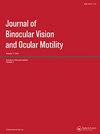Timely Surgery in Intermittent Exotropia
Q3 Medicine
Journal of Binocular Vision and Ocular Motility
Pub Date : 2023-01-02
DOI:10.1080/2576117X.2022.2152265
引用次数: 0
Abstract
ABSTRACT Introduction Surgical treatment of intermittent exotropia is indicated when periods of monocular deviation become longer or control over deviation deteriorates. However, there is no consensus on the ideal age to perform surgery in patients with intermittent exotropia. Purpose To evaluate ocular alignment and sensory results at 12 months of follow-up, in patients who received surgical treatment for intermittent exotropia at ≤4 years or >4 years. Methods A retrospective, observational, analytical, and comparative cohort study was carried out, which included 97 patients treated surgically for X(T), divided into two groups, ≤4 years and >4 years. The motor and sensory results of the patients were evaluated on the first day, 1 month and 12 months of postoperative follow-up. Results In this study, no statistically significant differences were observed in ocular alignment and postoperative sensory results at 1 year of follow-up between both groups. Conclusion Age is not a variable that influences surgical results in patients with intermittent exotropia. Instead of early or delayed surgery, we propose to use the term “timely surgery.”间歇性外斜视的及时手术治疗
摘要引言间歇性外斜视的手术治疗是指当单眼斜视的时间变长或对斜视的控制恶化时。然而,对于间歇性外斜视患者进行手术的理想年龄还没有达成共识。目的评估12岁时的眼部对齐和感觉结果 随访数月,接受间歇性外斜视≤4手术治疗的患者 年或>4 年。方法进行回顾性、观察性、分析性和比较性队列研究,包括97例接受X(T)手术治疗的患者,分为两组,≤4 年和>4 年。在第1天、第1个月和第12天对患者的运动和感觉结果进行评估 术后随访数月。结果在本研究中,两组在随访1年时的眼部对齐和术后感觉结果没有观察到统计学上的显著差异。结论年龄不是影响间歇性外斜视患者手术效果的变量。我们建议使用“及时手术”一词,而不是早期或延迟手术
本文章由计算机程序翻译,如有差异,请以英文原文为准。
求助全文
约1分钟内获得全文
求助全文
来源期刊

Journal of Binocular Vision and Ocular Motility
Medicine-Ophthalmology
CiteScore
1.20
自引率
0.00%
发文量
42
 求助内容:
求助内容: 应助结果提醒方式:
应助结果提醒方式:


